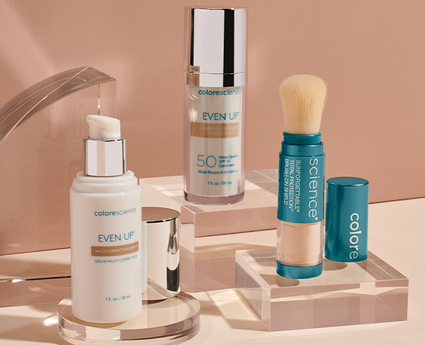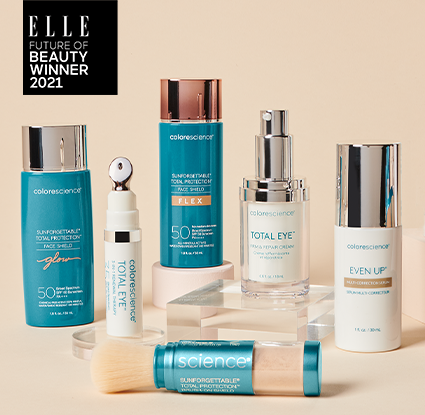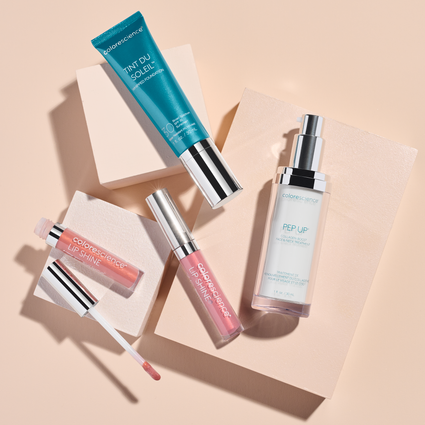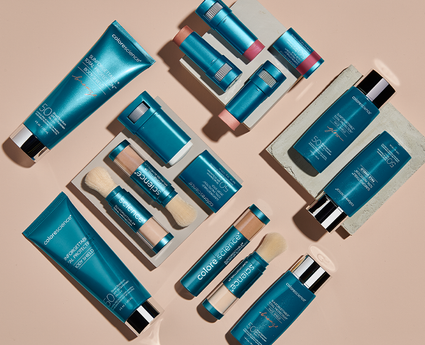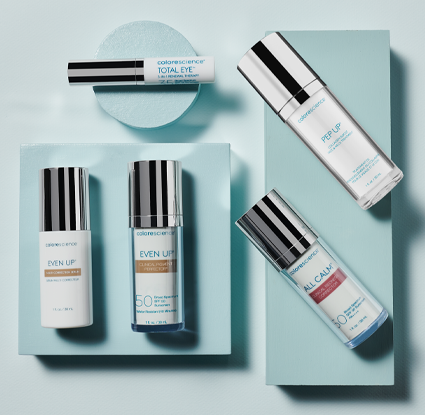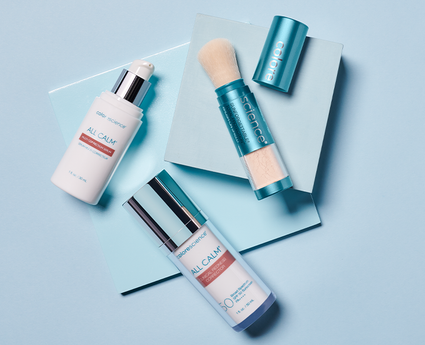Sun Safety for Kids: Sun Safety Tips for Parents

We all want our kids to get off their computer screens and spend more time outside, but worries of sunburns and UV radiation give many parents pause. It’s important to keep your little one’s sensitive skin protected from harmful UV rays while allowing them to explore the outdoors.
Skin cancer is on the rise, and many young people are falling victim to it. The American Cancer Society estimates that there will be at least 87,110 new cases of melanoma diagnosed in 2017 alone. Melanoma is the scariest, deadliest form of skin cancer—it’s expected to cause around 9,370 deaths this year.

These scary statistics have many parents hesitant to let their little ones head outside.
While it’s important to understand the risk of sun damage, there are ways to mitigate this risk and let your kids bask under the sun. Sun safety isn’t complicated, it just takes some practice.
Keep these sun safety tips for kids in mind and teach your little ones how to be safe in the sun.
What You Need to Know About Ultraviolet Rays
What’s the harm in spending a few minutes in the sun without sunscreen? UV rays are your skin’s worst nightmare. Practicing sun safety for kids means understanding the way the sun can penetrate the skin, causing burns and predisposing your little ones to skin cancer down the line. It doesn’t take too much time in the sun for ultraviolet rays to begin wreaking havoc. What exactly are these UV rays we’re always warned about?
UV rays make up a tiny portion of the sun’s rays, but they are the main cause of sun damage on the skin. These rays can damage the DNA in your skin cells; if they damage the DNA of genes that control skin cell growth, cancer can start.
So how do UV rays interact with your skin? They react with melanin, a chemical found in your skin. This chemical is your first line of defense against sun damage. It works to absorb these dangerous rays before they can penetrate your skin’s layers and do serious damage.
Here’s what you should know about the three different types of UV rays, and how to apply that knowledge to your family’s sun safety:
- UVA Rays: This type of ultraviolet ray can easily pass through the earth’s ozone layer, and these rays make up the bulk of our sun exposure. These are the types of rays produced in tanning beds; as recent studies have shown, tanning beds can damage the skin significantly. While UVA rays are observed to make the skin tan, make no mistake—tanned skin is damaged skin.
- UVB Rays: This type of ultraviolet ray is also dangerous, and can result in sunburns and weaken your little one’s immune system. UVB rays are known contributors to skin cancer. Some UVB rays are able to sneak through the ozone layer, so your little ones are at risk from this type of ultraviolet ray.
- UVC Rays: This type of ultraviolet ray is the most dangerous, but fear not; these rays are unable to penetrate the ozone layer, and don’t make it down to earth.
When it comes to damaging UV rays, UVA and UVB are the two you need to watch out for when practicing sun safety.
Melanin
The amount of melanin you have in your skin varies from person to person. If your child has darker skin color, they have more melanin to help absorb UV rays. If your child has lighter skin color and fair hair, they have less melanin, and may be more susceptible to skin damage from sun exposure.
While fair skin can burn more easily, people with dark skin aren’t immune to skin damage. Skin cancer affects between 1 and 4 percent of Latinos, African Americans, and Asians. However, it tends to be deadlier, as it goes undetected for longer.
Peak Sun Damage Hours
UV rays strongest and most damaging between the hours of 10 a.m. and 4 p.m. Try to plan indoor activities during these hours. If you are going to be out in the sun, look for shaded areas that provide coverage and practice sunscreen safety.
Note: Even if you live in an area that doesn’t see a whole lot of sun, it’s still crucial to practice these sun safety tips. Overcast skies can burn the skin just as easily, as up to 80 percent of UV rays can penetrate clouds.
Is My Child More Prone to Sun Damage?
We’re all affected by the sun’s UV rays, but some people are more likely to get sun damage. So how do you know if your child’s skin is more sensitive to sun exposure?
- Light skin color: Those with lighter skin have less melanin, making them more likely to burn.
- Light eyes: People with blue or green eyes are more likely to get sunburns.
- Genetic predisposition: If you have a family history of skin cancer, your child may be predisposed to UV ray damage.
- Moles: If your little one has many moles or especially large moles, they may be susceptible to sun damage. Be sure to keep an eye on moles and watch for any changes. Irregular mole shape, growth, and color could be early skins of melanoma.
- Autoimmune disorders and diseases: If your child lives with an autoimmune disease, they may be more vulnerable to skin damage.

Whether or not your child falls into any of these categories, it’s important to protect their skin from the sun’s harmful ray and teach them how to be safe in the sun. Even children who don’t often get sunburns when outdoors can still suffer the scary effects of UV rays.
Vitamin D Concerns
Many believe their kids need to spend an extended length of time in the sun in order to get their daily dose of Vitamin D. While sun exposure is a good way to get your Vitamin D, many parents take this tip too far. To get your recommended dose of this important vitamin, you need only spend 10-15 minutes in the midday sun. That’s not a long time, and many of us spend far more than that in the outdoors.
If your little ones are drinking milk and playing outside at least once a day, you likely don’t need to worry about any type of Vitamin D deficiency, so slather on the sunscreen every time they romp outside.

Find Some Shade
Your best defense from the sun? Staying out of it. Find shade whenever you can. Skin safety may mean simply getting out of the sun. If you’re headed to the beach, be sure to pack an umbrella or even small tent so your little ones can get a reprieve from the blaring UV rays
The sun can damage your skin at any time of the day, but there’s a particular window of time that you should seek out shade: 10 a.m. to 2 p.m. During these four hours the sun is at its strongest, so it’s important to take cover.
If you have an infant or toddler, shade is crucial. Babies have thin skin, and have not yet developed all the melanin they need. Because of this, their skin is quicker to burn.
Eye Protection
Don’t let those peepers go unprotected! Sunglasses play an important role in sun safety. Find polarized sunglasses for every member of your family. Polarized sunglasses are treated with a special chemical coating. This coating reduces glare, which is created from reflected light. Polarized lenses can help you spot objects more clearly, while also protecting your delicate eyes from UV light.
The skin around your little ones’ eyes can be extremely sensitive, and sunscreen can easily irritate your child’s eyes. However, the thin skin on their eyelids can easily get burned. Sunglasses are a surefire way to keep this skin protected.
Quick tip: It can be tough to convince your child to keep their sunglasses on, especially if you have a baby or toddler insistent on pulling them off. To keep those sunglasses on and in-place, invest in a wrap-around strap.
Dress Your Kids in the Right Clothing
One of the easiest and most effective ways to protect your kids from the sun is to cover them appropriately. The right clothing serves as a strong shield against UV rays.
When shopping for clothes, use this test to ensure your little one has the protection they need: Place your hand inside the shirt, dress, or pants and hold up against the light. If you can see through the garment and see your hand clearly, it won’t provide protection against UV rays.
Keep your eye out for the following qualities when shopping for clothes for your kids:
- Darker fabric: Dark colors offer more protection than lighter colors.
- Thicker material: Certain materials are better at blocking UV rays. Cotton doesn’t offer much protection; look to nylon or polyester.
- Clothing construction: Pinch the fabric between your fingers. If it feels thin, it won’t give your child much protection from UV rays.
You can take this test a step further by looking for the UPF, or Ultraviolet Protection Factor. This is a rating given to clothes measuring how effective they are at blocking out the sun’s UV rays. This is a relatively new rating, and you may find it a bit tougher to find clothing with this rating barring specific collections. If you do find a UPF-rated fabric, look for a rating of at least 40.
Don’t forget those little noggins! Our heads take the brunt of the sunlight, but most of us don’t slather our kids’ heads in sunscreen. Keep your children’s heads protected with a thick hat. Find sun hats that they can throw on to keep the sun out of their eyes and off of the scalp. While baseball caps are convenient, they don’t protect the sensitive skin of the ears and neck. Bucket hats and straw hats are your best bet for full coverage.
While picking your kids’ clothes wisely can help protect them while they play in the backyard, how can you add extra protection when they’re in their swimsuits? Swim shirts. These water-resistant fabrics can provide a bit of added coverage while your kids splash away.
Sunscreen Safety Tips
Whether you’re lying on the beach or running errands around town, any time spent outdoors leaves your skin vulnerable to sun damage—summer or not. Sunscreen is one of the most important ways to protect your children from UV rays, and every morning, you should apply a healthy coating of SPF to your kids’ skin.
Unfortunately, recent studies show that children aren’t getting the sunscreen they need. According to a recent report, only 1 in 4 children wear sunscreen regularly.
The same study found that over half of the children surveyed had gotten at least one sunburn the previous summer. A single sunburn that results in blisters in childhood can actually double your child’s lifetime risk of melanoma, the deadliest type of skin cancer.
These statistics are scary, but your child doesn’t have to be part of them. Make a commitment to using sunscreen every single day—your children need it.
Use this UV protection chart to ensure you child is safe from the sun’s UV rays:

How Does Sunscreen Work?
Most sunscreen applications are made of two types of ingredients: inorganic chemicals, and organic chemicals.
Inorganic particles: Inorganic chemicals can actually reflect sunlight through a physical barrier. Examples of these types of chemicals include zinc oxide—ever seen lifeguards with white noses? That’s pure zinc oxide. These days, companies are able to make these inorganic particles a lot smaller, making zinc oxide less white meaning your little one won’t walk around looking like a ghost.
Organic particles: Organic chemicals work differently; they absorb UV radiation, breaking down and creating heat as they absorb. Oxybenzone is an example of an organic chemical you’ll find in sunscreen.
How Sunscreens are Rated
As you shop for sunscreen, there are a few guidelines you should keep in mind. The most important? SPF, or Sun Protection Factor. You’ll see this rating on every bottle of sunscreen. This rating measures how well the sunscreen can protect against UVB.

- SPF 15: Sunscreens with this rating block around 94 percent of UVB rays.
- SPF 30: Sunscreens with this rating block around 97 percent of UVB rays
- SPF 45: Sunscreens with this rating block around 98 percent of UVB rays.
Unfortunately, there aren’t any sunscreens that can block 100 percent of the sun’s rays, but those rated SPF 45 or higher offer the highest level of protection.
You should also look for sunscreens labeled as broad spectrum. SPF only measures protection against UVB rays; broad spectrum sunscreens are designed to block UVA rays as well. While there’s no current standard to measure UVA blocking, it’s important that you look for this label as you shop for sunscreen.
Rules for Reapplication
Regardless of your sunscreen’s SPF rating, it’s important to reapply every two hours. For kids, it’s a good idea to reapply more frequently, as splashing in the water and sweating can cause the sunscreen to wear off sooner.
Watch Out for Allergies
Some children are allergic to certain sunscreen ingredients. It’s wise to test any new sunscreen on a small patch of your child’s skin. Rub a small amount of sunscreen into the inside of your child’s upper arm. After a day, check the skin for any type of redness or rash. In general, sunscreens that contain titanium dioxide or zinc oxide are less likely to cause allergic reaction, because the skin doesn’t absorb these ingredients.
Does the Expiration Date Matter?
The expiration date of your sunscreen does make a difference. It’s best to use your bottles up by the date recommended for maximum protection. When you purchase sunscreen that doesn’t have an expiration date printed on it, write the date you purchased it in pen. Keep your sunscreen in a cool storage area and try to avoid leaving the bottles in the sun for too long.
Taking Care of a Sunburn
Mistakes happen, and sunburns can be an unhappy consequence of a bit too much time spent in the sun. If your little one is suffering from a sunburn, there are a few ways you can relieve the pain and help the skin repair itself more quickly.
- Keep them hydrated: Sunburns can lead to dehydration, which can make your little one sick. Be sure to replenish their body with plenty of water. Skip the sugary drinks found so often on the beach boardwalk: soda, lemonade, and even high-sugar juices can make dehydration worse.
- Have ice packs on-hand: When your child’s skin is burning up, one of the easiest ways to provide instant relief is to use ice packs. Be sure to wrap a thin towel around the pack to avoid direct contact with the skin. If ice is too shockingly cold, fill up your bathtub with cool water and let your child soak to cool down. To help calm inflammation, throw some ground oatmeal into the tub with them.
- Stock up on Aloe Vera: Aloe Vera is a parent’s best friend when it comes to treating sunburn pain. This plant helps calm inflammation, feels soothing on the skin, and moisturizes to help prevent against the scaling and peeling that sunburns can cause. Instead of running to the store for more Aloe Vera gel, cultivate your green thumb. Aloe Vera is easy to grow, and you can use the gel directly from the plant’s leaves. An added bonus? Your child is sure to love the novelty of this cure—distracting them from their painful sunburn is always a good thing.
- When to see the doctor: If your child’s burn is so bad that the skin blisters, you may want to make an appointment with your pediatrician. Also look out for a fever or strange behavior; this may indicate a more serious condition and it’s best to have them check out if they exhibit either of these symptoms.
Age Specific Sunscreen Safety Tips
Our kids grow up in the blink of an eye, and we all know the difference even a month can make. While the above mentioned tips are general rules for kids of all ages, it’s important to research age-specific tips.
Make sure your child is protected, no matter their age, with these sunscreen safety tips.
- Infants: Newborns to 6 months old
If you have a new baby, sun protection is essential. Because babies have only trace amounts of melanin in their skin, they’re much quicker to burn. Keep your infant out of the sun and don’t use sunscreen—their skin is often too sensitive for the ingredients found in your favorite brands. Instead, stick to clothing and shade as your main protection factors.
- Babies: 6 to 12 months old
Once your baby is at least six months old, sunscreen is safe to use. Be sure to slather your little one’s skin with sunscreen. You can use baby sunscreen or adult sunscreen, but look for brands that are labeled as broad spectrum.
- Toddlers: 12 months old and up
As your child gets older, explain to them the importance of sun safety for kids, and make an example of yourself by applying sunscreen every day. When kids begin to spend more time outdoors, you’ll need to be more diligent about applying sunscreen lotion. As parents, we know how tough it can be to keep a toddler still; spray sunscreen can make it easier to apply, just be sure to rub the application in to maximize its protective power.
Parenthood doesn’t come with a handbook, and keeping our kids safe is a constantly evolving task. When it comes to sun safety for kids, a few helpful tips can make all the difference. With this information in your arsenal, your kids can spend time outdoors without worry of sunburn/.
Keep your family safe all year long with sun safety. Childhood is meant to be spent on outdoor adventures, so make sure your kids are prepared to explore without hurting their skin.

